 W
WThe history of interwar Poland comprises the period from the revival of the independent Polish state in 1918, until the Invasion of Poland from the West by Nazi Germany in 1939 at the onset of World War II, followed by the Soviet Union from the East two weeks later. The two decades of Poland's sovereignty between the world wars are known as the Interbellum.
 W
WThe Battle of Bereza Kartuska was fought between the combined forces of the Second Polish Republic and Soviet Russia around the village Bereza Kartuska first on 14 February 1919, and again, between July 21 and July 26, 1920. Polish units crossing the border, invasion of Belarus. They attacked into the township of Bereza, and crossing the Neman river, taking Pinsk, and reaching the outskirts of Lida.
 W
WThe Battle of Daugavpils, or Battle of Dyneburg, was the final battle during the Polish-Soviet War of 1919. A joint Polish and Latvian force, operating under Polish Staff orders known as "Operation Winter", attacked the Red Army garrison in Dunaburg, or Daugavpils, from 3 to 5 January 1920.
 W
WThe Battle of Lawica was one of battles of the Greater Poland Uprising (1918–19). It took place on January 9, 1919: Polish rebels defeated German forces, capturing the Poznań-Ławica Airport, together with rich war booty, estimated at 200 million German Papiermarks.
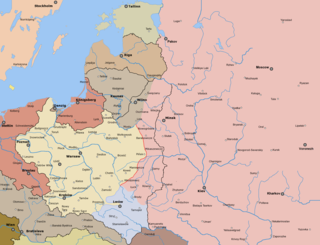 W
WThe Battle of Lemberg took place from November 1918 to May 1919 and was a six-month long conflict in what is modern-day Ukraine. The battle was fought between attacking forces of the West Ukrainian People's Republic and the local Polish civilian population, assisted later by regular Polish Army forces for the control over the city of Lviv, in what was then eastern part of Galicia and now is western part of Ukraine. The battle sparked the Polish-Ukrainian War, ultimately won by Poland.
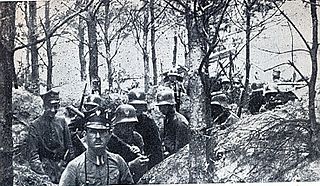 W
WThe Battles of Rawicz refer to the armed anti-German rebellion by ethnic Polish residents of the town of Rawicz, located in Province of Posen of the German Empire. The two battles took place in February 1919, during the Greater Poland Uprising, and resulted in Polish defeat.
 W
WThe Battle of Skoczów took place in late January 1919, during the Polish–Czechoslovak War. Czechoslovak units were halted only under pressure from the Entente. The result of the war was to set a new demarcation line, which extended the territory controlled by Czechoslovakia. Battle were stopped by the Czechoslovak Minister of Defense near the town of Skoczów, Poland and a ceasefire was signed.
 W
WThe Foch Line was a temporary demarcation line between Poland and Lithuania proposed by the Entente in the aftermath of World War I. The line was proposed by Marshal of France Ferdinand Foch and was accepted by the Conference of Ambassadors in 1919. With small adjustments the line formed the basis of the inter-war Polish-Lithuanian border. The line left Vilnius (Wilno) on the Polish side. After World War II only its westernmost part, close to the town of Suwałki, follows the line.
 W
WThe Greater Poland uprising of 1918–1919, or Wielkopolska uprising of 1918–1919 or Posnanian War was a military insurrection of Poles in the Greater Poland region against German rule. The uprising had a significant effect on the Treaty of Versailles, which granted a reconstituted Second Polish Republic the area won by the Polish insurrectionists. The region had been part of the Kingdom of Poland and then Polish–Lithuanian Commonwealth before the 1793 Second Partition of Poland when it was annexed by the German Kingdom of Prussia. It had also, following the 1806 Greater Poland Uprising, been part of the Duchy of Warsaw (1807–1815), a French puppet state during the Napoleonic Wars.
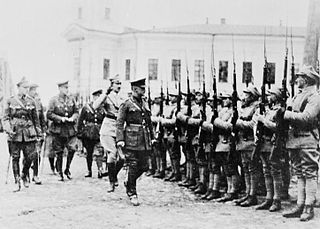 W
WMurmańczycy was a common name for Polish military formations which fought against the Bolsheviks in the area of Murmansk and Arkhangelsk, northern Russia, in 1918–1919. They were part of the Allied intervention in the Russian Civil War.
 W
WThe Niasviž uprising, or Nieśwież uprising was a failed anti-Soviet pro-Polish insurrection residents of the town of Niasviž (Polish: Nieśwież, now Belarus. It took place on March 14–19, 1919, during the Polish-Soviet War. As a result, the victorious Bolsheviks shot five leaders of the uprising. The Niasviž Uprising was later commemorated by two monuments, one of which still exists.
 W
WOperation Mińsk was a military offensive of the Polish Army resulting in the recapture of Minsk from the Bolsheviks around August 8, 1919. The victory allowed the Polish troops to advance further into the Russian-controlled Lithuania and Belarus, and thus present the Bolsheviks with a fait accompli by driving them out of the newly acquired territories. The main Polish attack was in the direction of Maladzechna, Minsk, and Polatsk along the railroad lines. On August 6 the Polish Army took over Slutsk, and Minsk two days later. The Polish control over the railway lines, prevented the Russians from bringing in reinforcements. By the end of August, the forces of Józef Piłsudski took over Barysau and Babruisk, and forced Lenin to return to the negotiating table. Operation Mińsk was considered critical for the confirmation of Polish presence in the Kresy macroregion at the time of the reconstitution of sovereign Poland. The negotiations however, failed, which led to the Soviet invasion of ethnic Poland in July 1920.
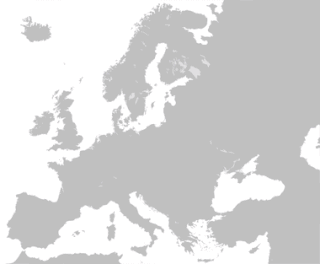 W
WBorder conflicts between Poland and Czechoslovakia began in 1918 between the Second Polish Republic and First Czechoslovak Republic, both freshly created states. The conflicts centered on the disputed areas of Cieszyn Silesia, Orava Territory and Spiš. After World War II they broadened to include areas around the cities of Kłodzko and Racibórz, which until 1945 had belonged to Germany. The conflicts became critical in 1919 and were finally settled in 1958 in a treaty between the People's Republic of Poland and the Czechoslovak Socialist Republic.
 W
WThe Poland–Czechoslovakia War, also known mostly in Czech sources as the Seven-day war was a military confrontation between Czechoslovakia and Poland over the territory of Cieszyn Silesia in early 1919.
 W
WThe Polish–Lithuanian War was a conflict between the newly independent Lithuania and Poland in the aftermath of World War I. The conflict was fought primarily in the Vilnius and Suvalkai Region. The conflict was connected to the Polish–Soviet War and was subject to international mediation at the Conference of Ambassadors, later the League of Nations. The war is viewed differently by the respective sides, with Lithuanian historians considering the war as part of the Lithuanian Wars of Independence, spanning from spring 1919 to November 1920 and the Polish historians deeming the war as part of the Polish-Soviet War and happening only in September–October 1920.
 W
WThe Proclamation to the Inhabitants of the Former Grand Duchy of Lithuania was a bilingual proclamation, formulated by Józef Piłsudski and distributed mainly in Vilnius (Wilno) on April 22, 1919. The proclamation was printed in the Polish and Lithuanian languages after Polish forces captured Vilnius in the Vilna offensive during the Polish–Soviet War. It was a statement of Piłsudski's political intentions, and contained a blueprint for his Międzymorze federation. The declaration was sharply criticized by both Polish and Lithuanian nationalists.
 W
WThe Romanian occupation of Pokuttya took place in early 1919, when, as a result of alliances concluded between Romania and Poland, the former entered the southeastern corner of the former Austro-Hungarian ruled province of Galicia. During the interwar period, Romania was Poland's main ally in Eastern Europe. Both nations were bound by several treaties and history of this alliance dates back to the end of World War I and the Treaty of Versailles. However, to actively cooperate, governments in Bucharest and Warsaw emphasized the necessity of a shared border. Discussions about the border started in Paris some time at the beginning of 1919 and continued during the following months.
 W
WThe Second Polish Republic, commonly known as Interwar Poland, refers to the country of Poland in the period between the two World Wars (1918–1939). Officially known as the Republic of Poland, the Polish state was re-established in 1918, in the aftermath of World War I. The Second Republic ceased to exist in 1939, when Poland was invaded by Nazi Germany, the Soviet Union and the Slovak Republic, marking the beginning of the European theatre of World War II.
 W
WThe Sejny Uprising or Seinai Revolt refers to a Polish uprising against the Lithuanian authorities in August 1919 in the ethnically mixed area surrounding the town of Sejny. When German forces, which occupied the territory during World War I, retreated from the area in May 1919, they turned over administration to the Lithuanians. Trying to prevent an armed conflict between Poland and Lithuania, the Entente drew a demarcation line, known as the Foch Line. The line assigned much of the disputed Suwałki (Suvalkai) Region to Poland and required the Lithuanian Army to retreat. While the Lithuanians retreated from some areas, they refused to leave Sejny (Seinai), because of its major Lithuanian population. Polish irregular forces began the uprising on August 23, 1919, and soon received support from the regular Polish Army. After several military skirmishes, Polish forces secured Sejny and the Lithuanians retreated behind the Foch Line.
 W
WThe Silesian Uprisings were a series of three uprisings from August 1919 to July 1921 in Upper Silesia, which was part of the Weimar Republic at the time. Ethnic Polish separatists, seeking to have the area transferred to the newly founded Polish Republic, fought German police and paramilitary forces, as the former sought to keep the area part of the new German state founded after World War I. Following the conflict, the area was divided between the two countries. The rebellions have subsequently been commemorated in modern Poland as an example of Polish nationalism.
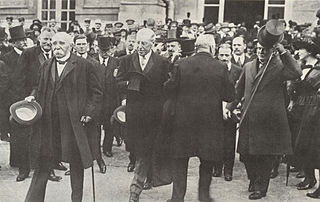 W
WLittle Treaty of Versailles or the Polish Minority Treaty was one of the bilateral Minority Treaties signed between minor powers and the League of Nations in the aftermath of the First World War. The Polish treaty was signed on 28 June 1919, the same day as the main Treaty of Versailles was signed, which is the reason for one of its names. It was the first of the Minority Treaties and served as a template for the subsequent ones; together with Articles 87-93 of Treaty of Versailles, it also formally established Poland as a sovereign and independent state on the international arena.
 W
WThe Vilna offensive was a campaign of the Polish–Soviet War of 1919–1921. The Polish army launched an offensive on April 16, 1919, to take Vilnius from the Red Army. After three days of street fighting from April 19–21, the city was captured by Polish forces, causing the Red Army to retreat. During the offensive, the Poles also succeeded in securing the nearby cities of Lida, Pinsk, Navahrudak, and Baranovichi.